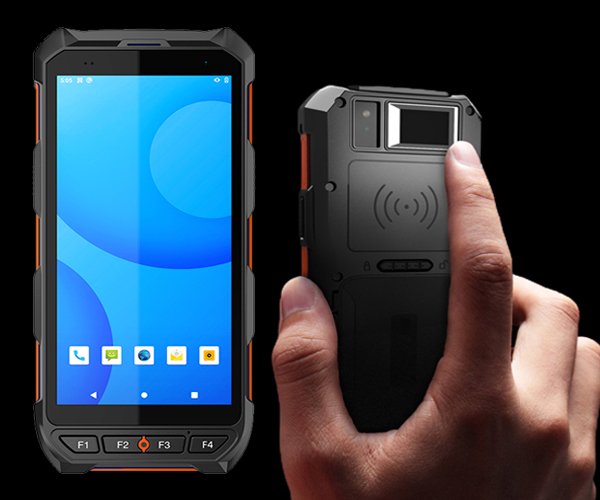Fingerprint recognition, as one of many biometric identification technologies, mainly makes use of the differences in the skin texture of people’s fingers, that is, the ridges and valleys of the texture. Since each person’s fingerprint pattern, breakpoints and intersections are different, , and remains unchanged throughout life, so fingerprint recognition has become the most widely used and most mature technology among many biometric technologies. At present, fingerprint recognition has been widely used in criminal investigation, anti-terrorism, national security, anti-narcotics, public security, etc. and also widely used in mobile phones, computers, ATMs, access control and clock-in systems in daily life.
The working principle of fingerprint recognition mainly includes three functions: reading of fingerprint images, extracting features, and comparing fingerprints. Common fingerprint recognition technologies are: optical, capacitive, and ultrasonic.
Optical fingerprint recognition
Optical fingerprint recognition is a fingerprint recognition technology with a long history. It uses the principles of light refraction and reflection to identify fingerprints. The angle of refraction of the emitted light on the uneven lines on the surface of the fingerprint and the brightness of the reflected light will be different, thereby collecting different brightness and darkness level of image information to complete fingerprint collection.
Optical fingerprint readers have high requirements for the light source and the contact between the fingerprint and the sensor, and require good fingerprint contact and alignment. Therefore, optical fingerprint modules often occupy a large space and have certain requirements for temperature and humidity, and Its recognition accuracy is not very ideal. The advantage of this technology is that it is low cost and is suitable for general fingerprint recognition applications, such as fingerprint attendance machines.
Capacitive fingerprint recognition
Capacitive fingerprint recognition is much more complex than optical fingerprint recognition. Its principle is to integrate pressure sensing, capacitive sensing, thermal sensing and other sensors into a chip. When a fingerprint presses the surface of the chip, the internal capacitive sensor will form a fingerprint image based on the charge difference (or temperature difference) generated by the fingerprint crest and trough, which requires good contact between the fingerprint and the sensor.
The advantage of using capacitive fingerprint recognition is that the image quality is high, the distortion is small, and the electronic signal will pass through the dead skin on the surface of the finger, so living body recognition can be carried out, which greatly improves the security of fingerprint recognition. However, capacitive fingerprint recognition also has its inherent shortcomings. High-precision fingerprint images require high-density capacitive particles, which will greatly increase the cost. And because capacitive fingerprint recognition relies on the ridges and valleys of the finger, if the surface of the finger is contaminated with dirt or sweat, it will change the texture information on the surface of the finger, leading to inaccurate recognition.
Ultrasonic fingerprint recognition
Ultrasonic fingerprint recognition is a new technology that uses sound waves to obtain fingerprint information. The sensor emits ultrasonic pulses, which are scattered and reflected when they encounter fingerprint patterns. The sensor receives the reflected ultrasonic signal and extracts fingerprint features by analyzing changes in the signal. Ultrasonic fingerprint readers have lower requirements for contact between the fingerprint and the sensor, so they can work when there is a certain distance from the fingerprint surface. The advantage of this technology is its greater resistance to dirt and scratches. It is a promising fingerprint identification method. However, ultrasonic fingerprint recognition is not without its shortcomings. The cost of ultrasonic fingerprint recognition is higher, and it is not as responsive as optical and capacitive fingerprint recognition. It is also not well compatible with protective films of some materials, which will limit ultrasonic fingerprint recognition. accuracy.
Taken together, optical, capacitive, and ultrasonic fingerprint recognition have their own pros and cons. Capacitive fingerprint recognition is currently the most widely used, but ultrasonic fingerprint recognition has the highest safety factor. Although optical fingerprint recognition is the lowest in cost, it has poor security and recognition performance.
Shenzhen Handheld-Wireless Technology Co,Ltd offer rugged handhelds and tablets currently which support capacitive fingerprints, have strong environmental applicability and high anti-counterfeiting. They can be widely used in public security, public security management, security, access control management, etc.
Post time: Sep-18-2023


